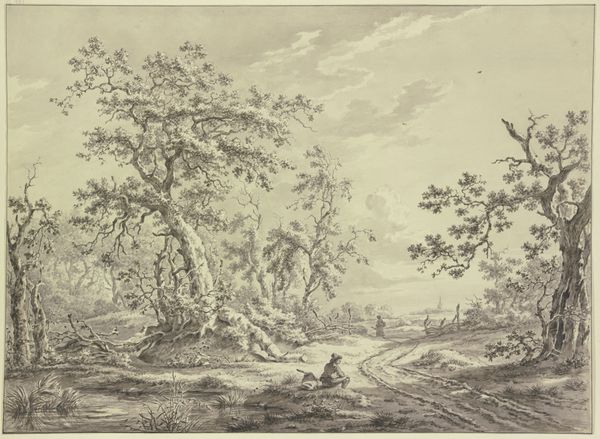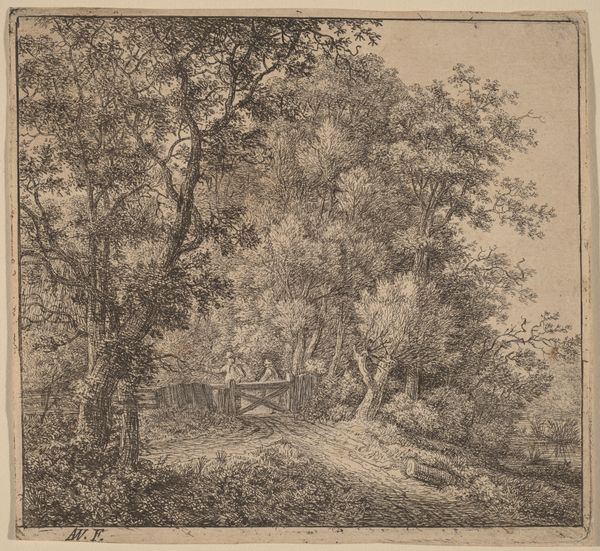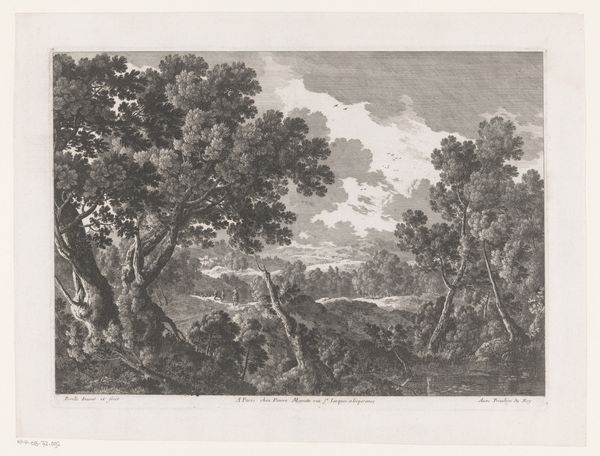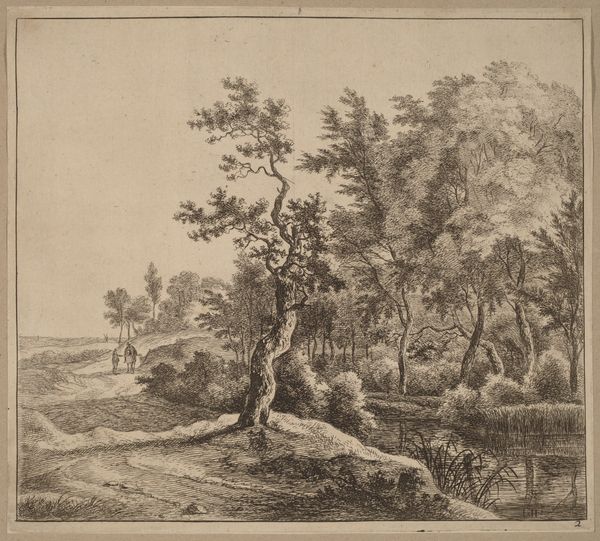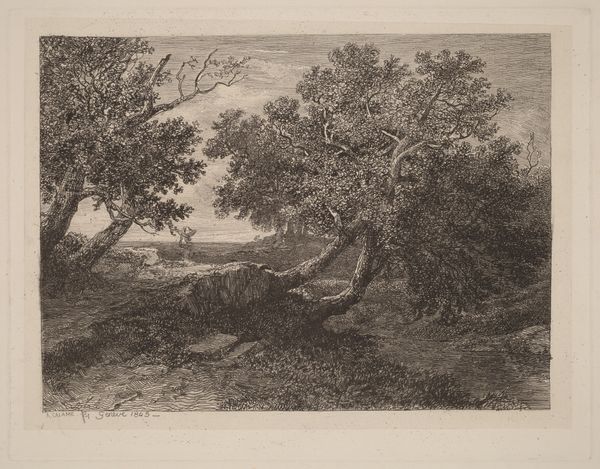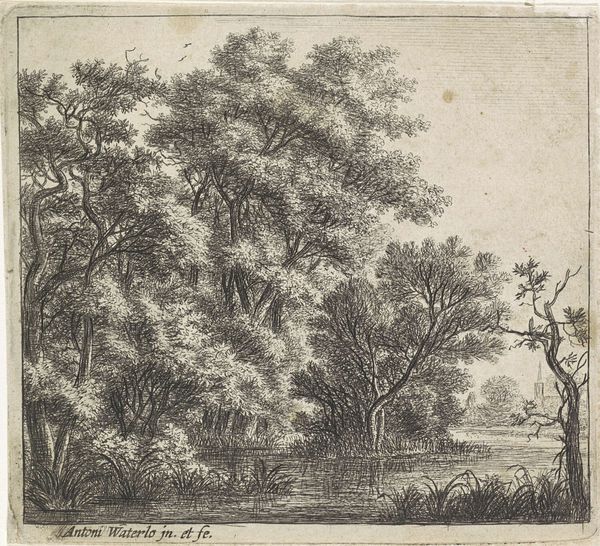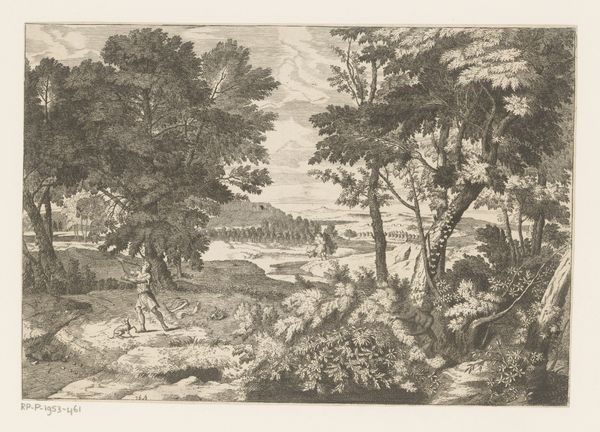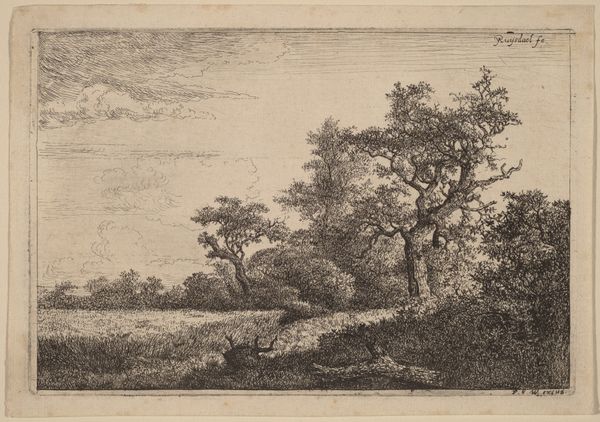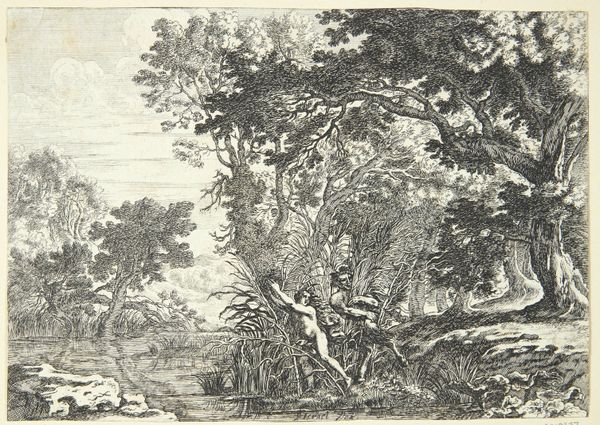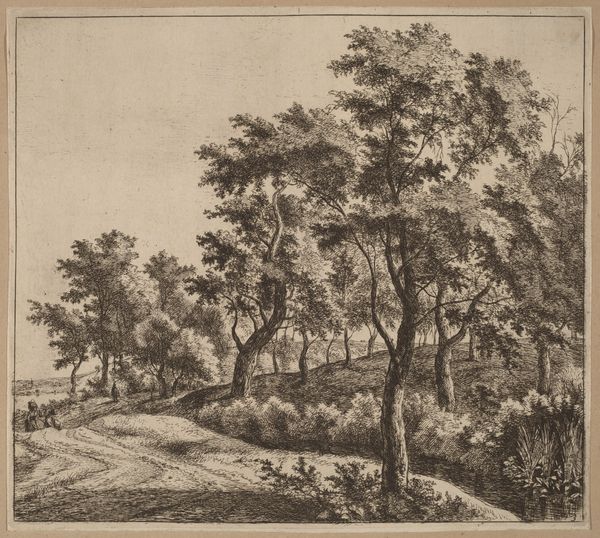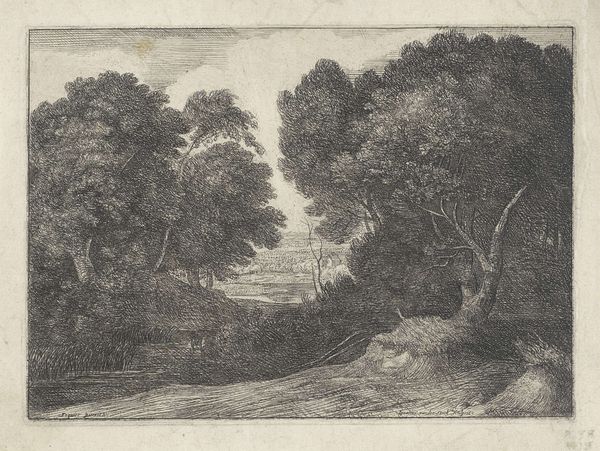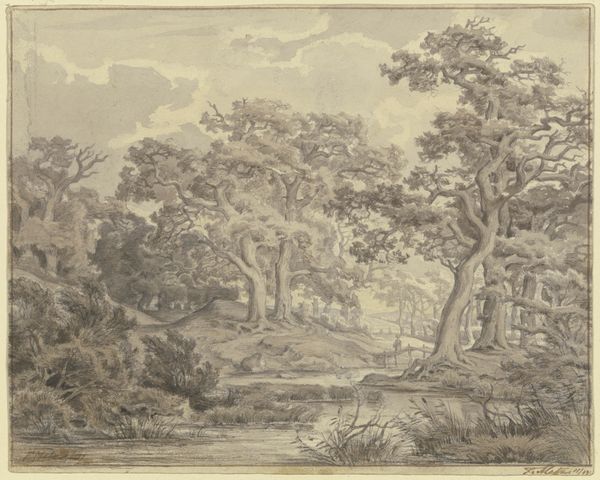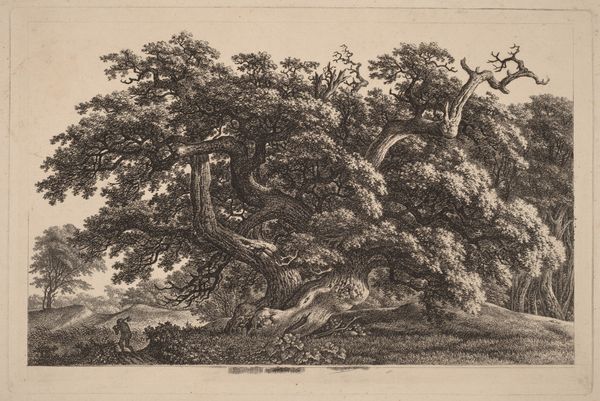
print, etching
#
narrative-art
#
baroque
# print
#
etching
#
landscape
#
figuration
Copyright: National Gallery of Art: CC0 1.0
Herman van Swanevelt made this print, Pan and Syrinx, sometime in the mid-seventeenth century. Swanevelt spent much of his career in Rome, where he became known for paintings and prints of idyllic landscapes like this one. But this isn't just any landscape, it's also a scene from classical mythology. On the right, you can see Pan, the god of the wild, chasing the nymph Syrinx. Syrinx is transformed into reeds to escape him. Pan, unable to tell which reed she has become, cuts them all to create his signature panpipe. The story speaks to the relationship between humans and nature. Pan, who is half-man and half-goat, disrupts the natural world, but from this disruption comes a thing of beauty. As art historians, we can interpret the meaning of this work by studying the visual codes and cultural references it contains. We can research the history of landscape painting, classical mythology, and the social conditions in which Swanevelt created this print. By doing so, we can better understand the complex relationship between art, culture, and society.
Comments
No comments
Be the first to comment and join the conversation on the ultimate creative platform.
